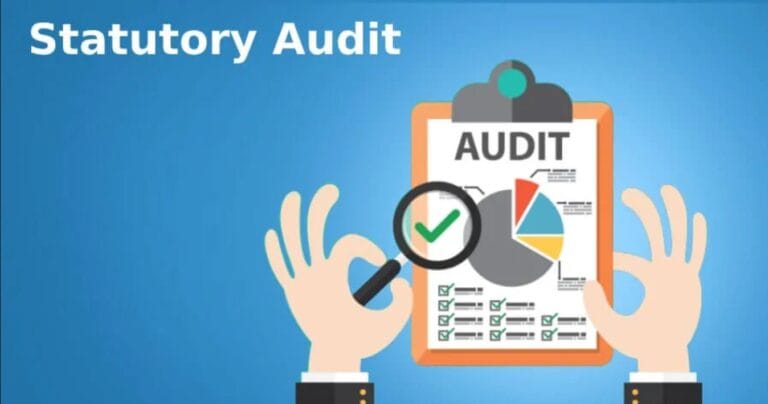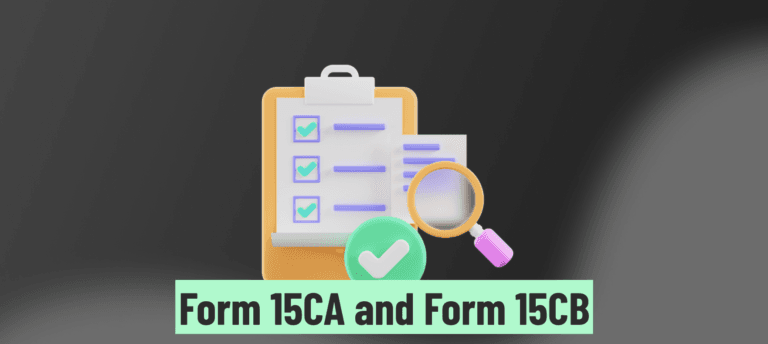As we all know, under the CIRP process under IBC 2016, there are various significant financial transactions and activities that must be carefully monitored and reported. A CIRP cost audit is an essential process to ensure transparency, accuracy, and accountability in managing the costs associated with the insolvency resolution process. Below is a comprehensive guide on CIRP cost audit, including its objectives, key components, process, and best practices.
Objectives of CIRP Cost Audit
- Transparency: Ensure that all expenses incurred during the CIRP are transparently recorded and reported.
- Accuracy: Verify that the costs reported are accurate and supported by appropriate documentation.
- Compliance: Ensure that the costs incurred are in compliance with the IBC regulations and guidelines set by the Insolvency and Bankruptcy Board of India (IBBI).
- Accountability: Hold the Interim Resolution Professional (IRP), Resolution Professional (RP), and other stakeholders accountable for the financial management during the CIRP.
- Efficiency: Evaluate the efficiency and prudence in the management of resources during the CIRP.
Key Components of CIRP Costs
CIRP costs, as defined under Regulation 31 of the Insolvency and Bankruptcy Board of India (Insolvency Resolution Process for Corporate Persons) Regulations, 2016, include:
- Fees of the IRP/RP: Fees payable to the IRP and RP for their services.
- Costs Incurred by the IRP/RP: Costs directly incurred by the IRP/RP in managing the insolvency process, including travel, accommodation, and administrative expenses.
- Fees of Professionals: Fees of legal, financial, and other professionals engaged during the CIRP.
- Costs of Running the Corporate Debtor as a Going Concern: Operational expenses necessary to keep the corporate debtor running during the CIRP.
- Other Costs: Any other costs approved by the Committee of Creditors (CoC) as part of the CIRP costs.
Process of CIRP Cost Audit
1. Planning and Preparation
- Audit Scope: Includes the defining of the audit scope, including the period to be covered and the specific costs to be audited.
- Engagement Letter: Issue an engagement letter outlining the objectives, scope, timeline, and responsibilities of the audit.
2. Collection of Data and Documentation
- Financial Records: Gather all financial records, including invoices, receipts, bank statements, and contracts related to CIRP costs.
- Supporting Documents: Collect supporting documents for all expenses claimed, such as travel tickets, accommodation bills, and professional fee invoices.
3. Verification and Validation
- Invoice Verification: Verify the authenticity and accuracy of invoices and receipts.
- Cost Allocation: Ensure that costs are correctly allocated to the CIRP and not to other unrelated activities.
- Compliance Check: Check compliance with IBC regulations and CoC approvals.
4. Analysis and Evaluation
- Reasonableness: Evaluate the reasonableness of the costs incurred in relation to the services provided.
- Benchmarking: Compare costs with industry benchmarks to identify any anomalies or excessive charges.
5. Reporting
- Audit Report: Prepare a detailed audit report highlighting the findings, discrepancies, and recommendations.
- Presentation to CoC: Present the audit report to the Committee of Creditors (CoC) for review and discussion.
6. Follow-Up and Action
- Corrective Actions: Recommend corrective actions for any discrepancies or non-compliance identified during the audit.
- Implementation Monitoring: Monitor the implementation of corrective actions and ensure continuous compliance.
Best Practices for CIRP Cost Audit
- Regular Audits: Conduct regular audits during the CIRP to ensure continuous oversight and timely identification of issues.
- Use of Technology: Utilize accounting software and audit tools to streamline the audit process and enhance accuracy.
- Transparency in Documentation: Maintain clear and organized documentation for all expenses to facilitate easy verification and validation.
- Stakeholder Communication: Maintain transparent communication with all the stakeholders associated with the CIRP process, including the CoC, to ensure transparency and trust in the audit process.
- Independent Auditor: Engage an independent auditor with expertise in insolvency processes to ensure objectivity and impartiality.
The CIRP cost audit is not just a critical component of the insolvency resolution process, but also a key factor in ensuring fairness and efficiency. It guarantees that all costs incurred are transparent, accurate, and compliant with regulatory requirements. By following a structured audit method and adhering to best practices, the IRP/RP and other stakeholders can ensure effective financial management during the CIRP, thereby facilitating a fair and efficient resolution process.
At Ujjwal Gupta & Co
We, at Ujjwal Gupta & Co, are dedicated to delivering personalized, high-quality solutions tailored to meet your financial and business needs. With our team of professionals and a client-first approach, we ensure that every challenge is met with expert guidance and strategic insight.
We are dedicated to ensuring your business’s success by providing best service practice available in the industry and that too at a cost effective pricing. Our team of experts is excited to work with you and provide the support you need to thrive in the Indian business landscape.
Our only motive is to create Value for Our Clients and accordingly, have a Client Value System at our Office.
So, let us help you navigate the complexities of finance and compliance, empowering you to focus on what matters most — growing your business. Get in touch today, and take the first step towards financial peace of mind.
CIRP costs refer to the expenses incurred during the Corporate Insolvency Resolution Process. These include:
- Fees of the Resolution Professional (RP).
- Costs incurred in running the debtor as a going concern.
- Legal and professional fees.
- Administrative costs (meetings, notices, etc.).
- Other expenses necessary for the conduct of the CIRP, such as audit fees, valuation costs, etc.
A CIRP cost audit is an audit or review of the expenses incurred during the insolvency process to ensure they are legitimate, reasonable, and in compliance with the law. This audit ensures that the costs charged as CIRP expenses are justified and that there has been no misuse of funds during the process.
The Resolution Professional (RP) is responsible for ensuring that CIRP costs are properly accounted for and audited. In most of the cases, an independent auditor may be appointed by the Committee of Creditors (CoC) or the National Company Law Tribunal (NCLT) to audit these costs and ensure transparency and accuracy.
The CIRP cost audit typically reviews:
- The fees of the Resolution Professional (RP).
- Expenses related to legal and professional services (lawyers, accountants, auditors).
- Operational expenses incurred in managing the corporate debtor as a going concern.
- Valuation and transaction audit costs.
- Any other costs that are categorized as CIRP expenses under the IBC regulations.
Auditing CIRP costs is important because:
- It ensures that the corporate debtor’s assets are not unduly depleted by excessive or unjustified expenses.
- Creditors have a clear and accurate understanding of how the funds are being utilized.
- It prevents misuse or fraudulent claims as CIRP costs are paid with priority over other debts.
- Ensures transparency and accountability in the management of the insolvency process.
CIRP costs must be approved by the Committee of Creditors (CoC). The Resolution Professional presents the CIRP cost estimates to the CoC, and they have the authority to approve or reject these costs. The CoC closely scrutinizes the expenses to ensure they are reasonable and necessary for the conduct of the insolvency process.
If discrepancies or irregularities are found during the audit of CIRP costs, the following actions can be taken:
- The Resolution Professional (RP) may be asked to provide clarifications or explanations.
- The CoC may disallow certain costs if they are deemed unreasonable or inflated.
- In cases of serious misconduct or fraud, the RP may face penalties or be replaced, and legal action could be initiated.
- The NCLT may be approached to resolve disputes regarding the legitimacy of certain CIRP costs.
The audit of CIRP costs is important for creditors because these costs are paid in priority over all other claims. An audit ensures that the funds meant for creditors are not unnecessarily depleted by excessive CIRP costs. A transparent audit gives creditors confidence that the insolvency process is being conducted efficiently and without undue wastage of resources.
While the IBC does not specify a fixed cap on CIRP costs, these costs must be reasonable and necessary for conducting the CIRP. The CoC, which represents the creditors, has the authority to approve or reject any costs that it deems excessive or unnecessary. If disputes arise, the NCLT can intervene to review and decide on the matter.
The National Company Law Tribunal (NCLT) can adjudicate disputes related to CIRP costs. If the CoC or any party raises concerns about the reasonableness or legitimacy of CIRP costs, the NCLT has the authority to review the costs, make a determination, and order adjustments or refunds if necessary. The NCLT ensures that CIRP costs are fair, justified, and in line with the provisions of the IBC.
Why Choose UGC?

Client Centric Approach
Client is the key driver of our service offerings. Our approach to service offerings is based on a client centric and customized approach. Our specialized teams are a mix of technical and industry experience in order to serve clientele for their specific needs.

Team Work
We have built high performing teams supported by strong work ethic. Our team is a mix of experts, professionals and support staff from technical and varied academic, social and ethnic backgrounds. We believe diversification plays a vital role in motivating the team.

Quick Turnaround
We always endeavour for a quick turnaround time to serve our clientele. We are supported by an experienced and client focussed support teams to offer timely services to our clientele. In case of any business exigencies and time sensitive service requirements, you can always count on us.

Open Communications
We believe that open communication is the core principle in order to demonstrate trust, build long lasting and valuable relationships with clientele. We are committed to ensuring transparency in communication, service offerings and delivery. We provide professional services to our clients.

Client Value System
We value for the Client time and thus, we offer services that are value for money. Quality professional services are provided to our clients, so that they are able to achieve their desired results. We are a quality trademark in the industry and thus, our clients count on us always.

Quality in Delivering Work
Our service offerings are driven by quality and reviews at every level. We strive to provide a qualitative and value-added delivery to our clientele. At all times, we endeavour to provide exceptional client service by meeting client expectations and driving client satisfaction.





















